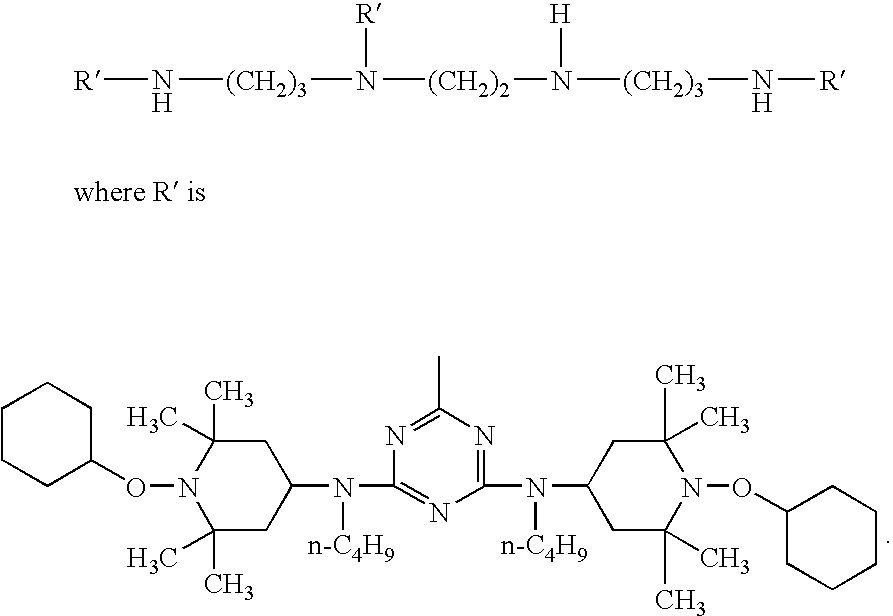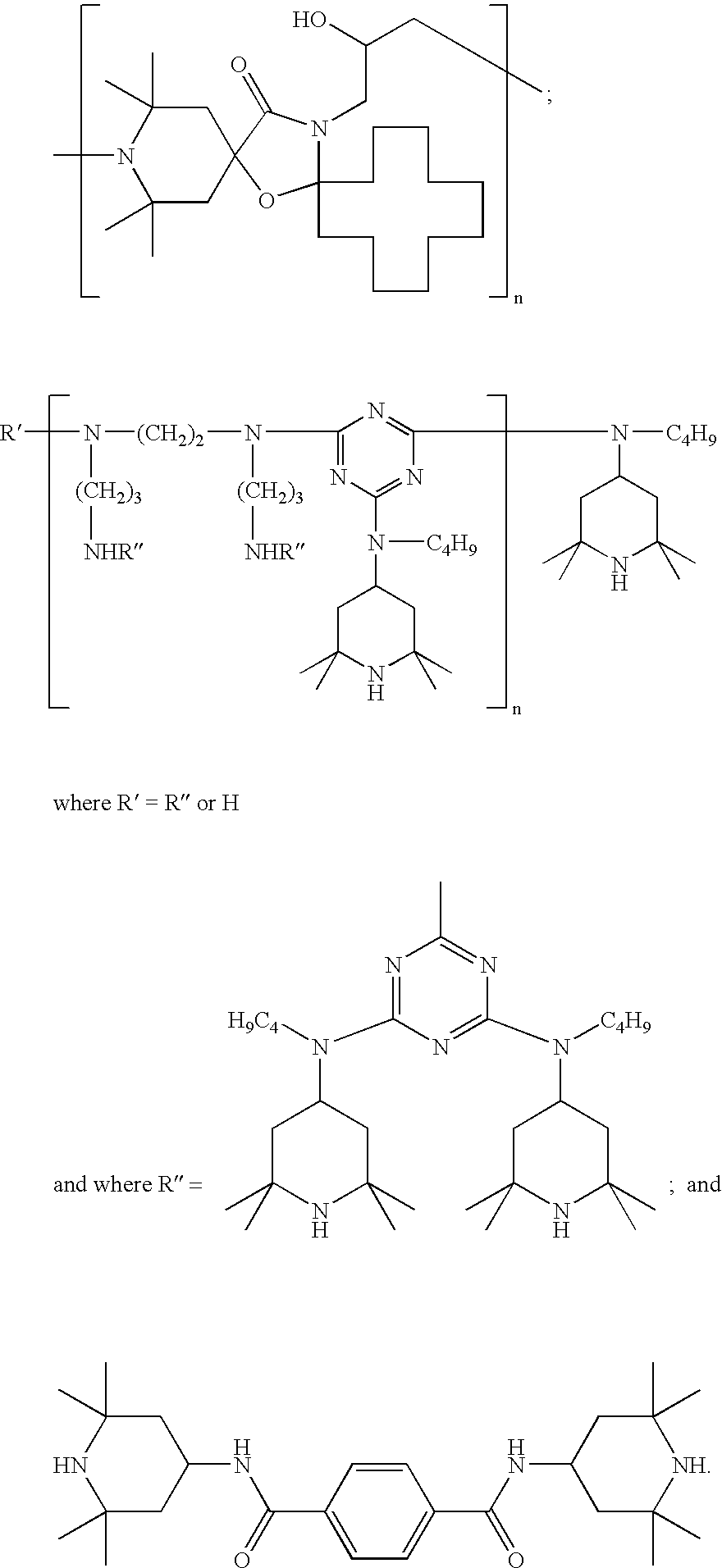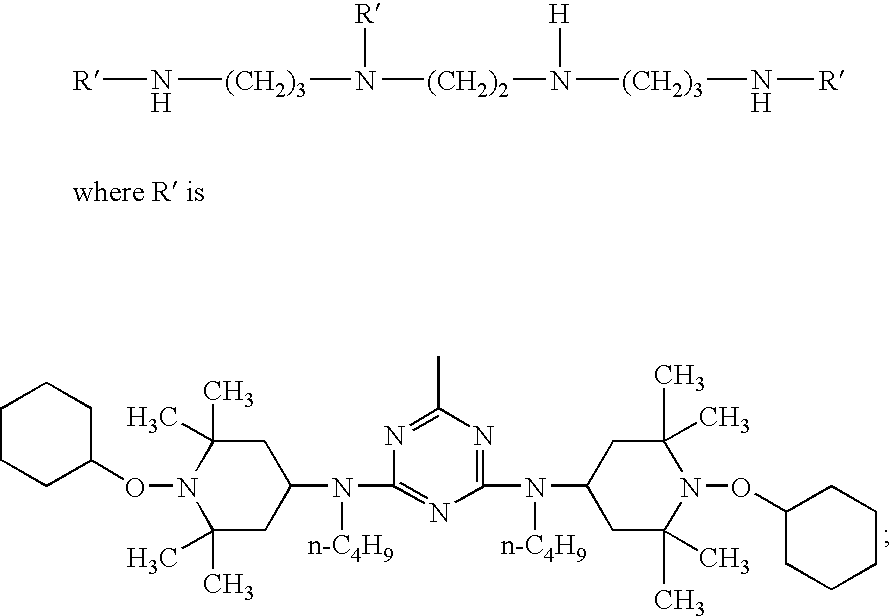Dyeable polyolefin fibers and fabrics
- Summary
- Abstract
- Description
- Claims
- Application Information
AI Technical Summary
Benefits of technology
Problems solved by technology
Method used
Image
Examples
example 1
Polypropylene Fiber Dyeability and Light Stability
Polypropylene Fiber Preparation
[0297] Fiber grade polypropylene, Montell PROFAX 6301, stabilizer additives and dyeability additives are weighed based on a batch of 1,000 gram total. The ingredients are placed in a plastic bag and tumble mixed. The mix is fed into a HILLS LAB FIBER EXTRUDER with a 41 hole round spinneret. The temperature profile of the extruder is at 400, 425, 450, 475, and 475° F. A constant pressure of 750 psi controls the screw speed via a feed back loop. The feed, draw, and relax rolls are at 175, 212 and 212° F., and are rotating at 120, 600 and 575 meters per minute. The draw ratio is 5:1 (600 Meters / min / 120 meters / min). The fiber comes in contact with a 6% aqueous fiber finish solution just before the feed roll. The fiber finish solution is LUROL PP-4521 from Goulston Industries. A LEESONA winder at the end of the line collects the fiber onto a spool. The final denier per filament is 10. The total denier for...
PUM
| Property | Measurement | Unit |
|---|---|---|
| Fraction | aaaaa | aaaaa |
| Fraction | aaaaa | aaaaa |
| Fraction | aaaaa | aaaaa |
Abstract
Description
Claims
Application Information
 Login to View More
Login to View More - R&D
- Intellectual Property
- Life Sciences
- Materials
- Tech Scout
- Unparalleled Data Quality
- Higher Quality Content
- 60% Fewer Hallucinations
Browse by: Latest US Patents, China's latest patents, Technical Efficacy Thesaurus, Application Domain, Technology Topic, Popular Technical Reports.
© 2025 PatSnap. All rights reserved.Legal|Privacy policy|Modern Slavery Act Transparency Statement|Sitemap|About US| Contact US: help@patsnap.com



